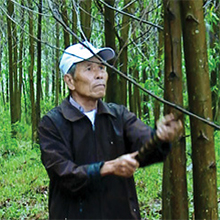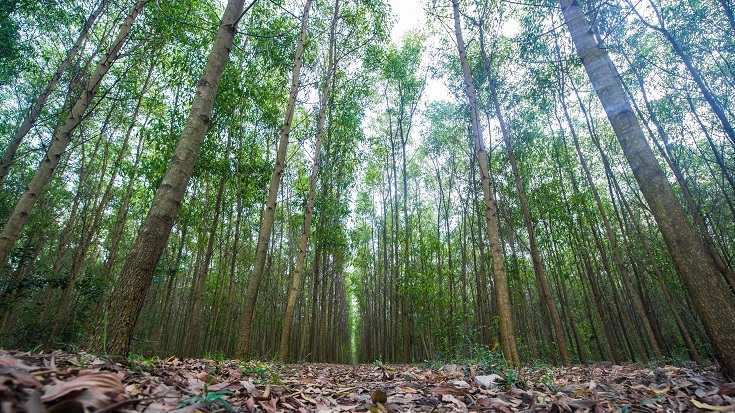Challenge
At the beginning of the project in 2005, Vietnam’s forest cover had decreased from 14.3 million ha in 1943 to 10.7 million ha. After decades of deforestation, the country had 7-8 million unused forest land that is degraded and denuded. About 25 million forest dependent poor and ethnic minority groups used forests for subsistence livelihoods, energy and safety net in times of hardship. In parallel with the degrading of forest land resources and loss of biodiversity, the demand for both subsistence and industrial forest products has increased due to rapid population growth and economic development.
The poor results of the plantation sector were caused by: inadequate incentive framework; insufficient market orientation; heavy top-down planning; weak extension capacity; limited technological and managerial capacity; and inadequate investment. Insufficient land was available for planting by the non-state sector exacerbated by delayed allocation of land use rights certificates and insecure forest land tenure.
Approach
The Bank’s approach in supporting the Government to address the above challenges included policy and administrative reforms, institutional and capacity strengtheining, and provision of financial incetives for good forestrypractices. The project enhanced the contribution of plantation forests to rural livelihoods by supporting:
· Policy and legal reforms to provide an investment and market environment that promoted commercial tree growing by investors, including households, communities, and the private sector;
· Clarification of the role of State Forest Enterprises and non-state sectors in commercial forestry, including for provision of market-driven extension services;
· Acceleration of the processes for land classification, issuance of land use rights certificates;
· Strengthening of forest management capacity in all aspects of smallholder plantation forestry;
· Introduction of financing and technical support mechanisms for communities and smallholders in transparent and cost-effective ways; and
· Improvement in the international competitiveness of the forest industry to pay market prices for wood grown by investor households.
The project is the first, and to date, the only one in Vietnam, using the approach of on-lending to small-holder plantation which proves to be much more sustainable, compared to the country’s traditional approach of subsidizing plantation.
Results
Being implemented from 2005 to 2015, the project achieved the following outcomes:
· More than 43,000 households, mostly from poor and near-poor households, in central Vietnam have received access to micro finance and technical support to cultivate over 76,500 hectares of forest.
· The project funded efforts to survey land and facilitated the issuance of land use right certificates for about 35,000 households, covering 66,000 hectares. Farmers use the certificates to apply for low-interest loans from the project’s fund managed by the Vietnam Bank for Social Policies.
· A pilot area of 850 hectares received the International Stewardship Forest Certification for meeting strict international technical, social and environmental standards. The price of certified timber is 20% to 30% higher than non-certified timber of the same type.
· More than 400 km of access track have been upgraded, which has lowered transport costs, significantly increased labor productivity and income as well as generated more employment for local people.
· The project has also supported the construction of 86 fire watchtowers and 102 information boards across the project area to raise public awareness on forest protection and minimize risks of forest fires and damages.
· The project also funded efforts to survey land and has facilitated the issuance of land use right certificates for about 35,000 households.
· The FSDP has reinforced regulations and capacity for protecting biodiversity in Special Use Forests, including several areas that are internationally recognized for their ecological importance.


